|
Christ Church with St Ewen CITY Bristol |
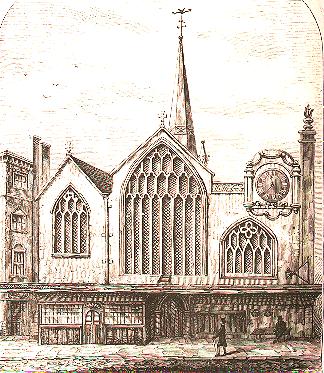 |
The churches of All Saints, St Ewen and Christ Church occupied three of the
four corners of the crossroads which was the heart of the
medieval city. The view above shows the steeple framed by
the arch of the one surviving medieval gate of the city.
This stands at the foot of Broad Street under the tower
of another church St Johns-on-the-Wall. The church was first mentioned in 1153 but was probably in existence before then. It was originally dedicated to Holy Trinity, but was already called Christ Church by the C14. The medieval church was longer than the present building, and seems to have had the tower sited towards the NE corner (see above and picture on St Ewen's page). The tower was found to be unsafe and the church badly decayed that it was demolished in 1786 and replaced by the current building which was completed in 1790. |
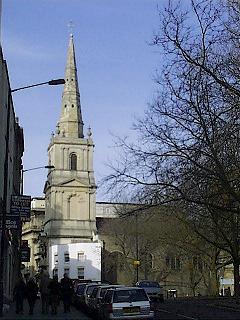 |
The architect was William Paty, and the church owes much to the design of St Martin-in-the-Fields in London, by Gibbs. The steeple is faced with the finest ashlar, but the side of the church is completely plain and rendered. This was because the church was completely surrounded by other property - shops and offices - as shown by the few surviving houses south of the tower in the picture above (left). Today the view is only possible to photograph when the leaves are off the trees! The church is best loved by Bristolians for its clock over the west door (heavy but attractively ornate work by Henry Williams 1883), where two quarterjacks dating from 1728 strike their bells every fifteen minutes. These can be seen on the about-Bristol page on this church (because I forgot to take a picture of them!). (Currently March 2016 these jacks have been removed for restoration work, although they have been gone for several years). |
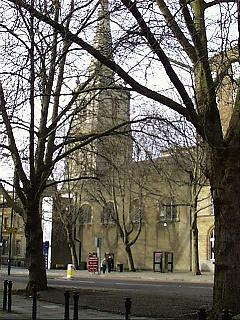 |
|
|
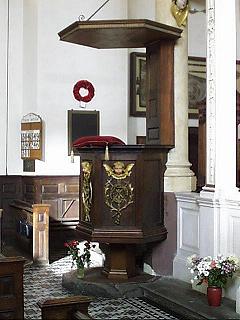 |
There was a marble pulpit with figures when I was younger, with a tester above with intricate inlay of 1815. That survives but the pulpit now incorporates the salvaged panels from Paty's original design. On the pier at the south end of the screen hangs an impressive C17 sword rest. | 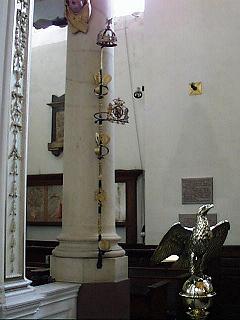 |
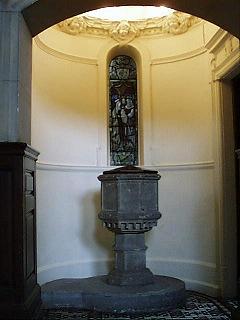 |
There are two fonts, Christ Church having a slim wooden baluster. However pride of place is given to the C17 font from St Ewen which is placed in an attractive circular baptistry at the north west of the aisle. A door leads from here into a large vestry and passage with kitchen etc. A close-up picture of the font can be found on St Ewen's page. The Christ Church font is in the vestibule outside of the kitchen where visitors rarely see it. Sadly it is now policy to keep the church is locked during the day, which it never used to be. The church opens for Sunday Services and lunchtimes on Tuesdays and Thursdays - more details with contacts on the parish website |
Page updated 30th January 2016